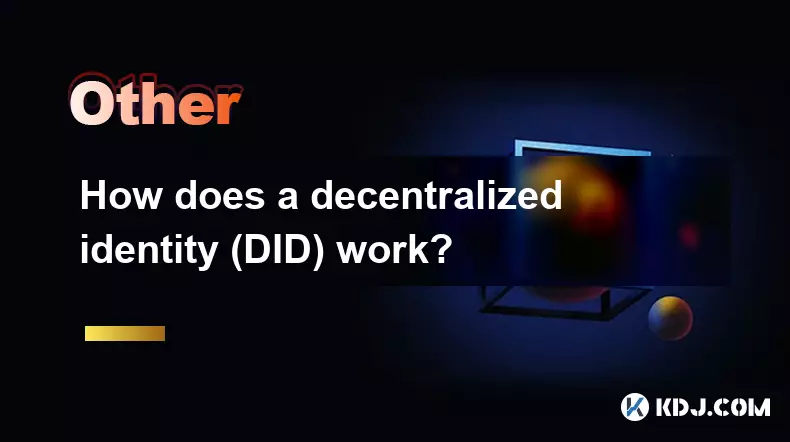-
 Bitcoin
Bitcoin $112000
1.27% -
 Ethereum
Ethereum $4464
4.15% -
 XRP
XRP $2.867
2.86% -
 Tether USDt
Tether USDt $1.001
0.04% -
 BNB
BNB $859.7
1.52% -
 Solana
Solana $210.5
5.20% -
 USDC
USDC $0.9999
0.01% -
 Dogecoin
Dogecoin $0.2185
3.84% -
 TRON
TRON $0.3410
1.36% -
 Cardano
Cardano $0.8404
3.84% -
 Chainlink
Chainlink $23.80
4.08% -
 Hyperliquid
Hyperliquid $45.96
4.22% -
 Ethena USDe
Ethena USDe $1.001
0.02% -
 Sui
Sui $3.382
4.80% -
 Bitcoin Cash
Bitcoin Cash $591.2
2.62% -
 Stellar
Stellar $0.3652
1.68% -
 Avalanche
Avalanche $25.35
7.33% -
 Cronos
Cronos $0.2796
10.18% -
 Hedera
Hedera $0.2213
4.12% -
 UNUS SED LEO
UNUS SED LEO $9.520
-0.20% -
 Litecoin
Litecoin $112.9
2.75% -
 Toncoin
Toncoin $3.181
1.89% -
 Shiba Inu
Shiba Inu $0.00001252
2.08% -
 Polkadot
Polkadot $3.882
3.71% -
 Uniswap
Uniswap $9.714
3.34% -
 Bitget Token
Bitget Token $5.004
0.70% -
 World Liberty Financial
World Liberty Financial $0.2185
-1.32% -
 Dai
Dai $0.9999
0.01% -
 Monero
Monero $269.1
3.07% -
 Aave
Aave $326.0
5.80%
What is a public ledger?
Public ledgers enable secure, transparent, and decentralized transactions by using blockchain technology, eliminating intermediaries and ensuring data integrity across networks.
Sep 03, 2025 at 07:18 pm

Understanding the Concept of a Public Ledger
1. A public ledger is a decentralized database that records transactions across multiple computers in a way that ensures transparency and security. In the context of cryptocurrency, this ledger is maintained by a network of nodes that validate and store transaction data. Each participant in the network has access to the same version of the ledger, preventing any single entity from controlling or altering the data.
2. The most well-known implementation of a public ledger is the blockchain technology used by Bitcoin. Every transaction is grouped into a block, which is then cryptographically linked to the previous block, forming a chain. This structure makes it nearly impossible to alter past transactions without changing all subsequent blocks, which would require consensus from the majority of the network.
3. Public ledgers eliminate the need for intermediaries such as banks or payment processors by allowing peer-to-peer transactions to be verified collectively by the network. This decentralization enhances trust among users, as no central authority has the power to manipulate transaction records or freeze accounts arbitrarily.
4. Transparency is a key feature of public ledgers. Anyone can view the transaction history, although the identities of the participants are typically represented by cryptographic addresses rather than personal information. This balance between openness and privacy supports both accountability and user confidentiality.
5. Because the ledger is distributed, it is highly resistant to censorship and downtime. Even if some nodes go offline or are compromised, the network continues to operate, maintaining the integrity of the transaction record.
How Public Ledgers Enhance Security in Cryptocurrency
1. The immutability of public ledgers ensures that once a transaction is confirmed and added to the blockchain, it cannot be reversed or deleted. This property protects against fraud and double-spending, where a user attempts to spend the same digital asset more than once.
2. Cryptographic hashing plays a crucial role in securing the ledger. Each block contains a unique hash of the previous block, creating a tamper-evident sequence. Any attempt to alter a transaction would change the block’s hash, alerting the network to the inconsistency.
3. Consensus mechanisms like Proof of Work (PoW) or Proof of Stake (PoS) ensure that all participants agree on the validity of transactions before they are added to the ledger. These protocols require network participants to solve complex mathematical problems or stake their own assets, making malicious behavior costly and impractical.
4. Decentralized validation means there is no single point of failure. Unlike traditional financial systems where a central server can be attacked, public ledgers distribute data across thousands of nodes worldwide, making them highly resilient to hacking attempts.
5. Regular audits of the blockchain are possible at any time by anyone, increasing confidence in the system. This level of scrutiny is not feasible in closed financial systems where transaction data is restricted to internal parties.
The Role of Public Ledgers in Financial Inclusion
1. Public ledgers enable access to financial services for individuals who are unbanked or underbanked. With just an internet connection and a digital wallet, users can send, receive, and store value without relying on traditional banking infrastructure.
2. Cross-border transactions become faster and cheaper when conducted on a public ledger. Traditional international transfers often involve multiple intermediaries, high fees, and long processing times. Blockchain-based transfers settle in minutes with significantly lower costs.
3. Smart contracts, which are self-executing agreements coded on public ledgers, automate processes like lending, insurance, and escrow without requiring third-party oversight. This reduces administrative overhead and increases efficiency in financial operations.
4. Users maintain full control over their funds. Unlike bank accounts that can be frozen or restricted, cryptocurrency wallets are controlled solely by the owner through private keys, empowering individuals with true ownership of their assets.
5. Public ledgers support the development of decentralized applications (dApps) that offer financial services in a transparent and permissionless manner. These platforms operate without gatekeepers, allowing anyone to participate regardless of location or socioeconomic status.
Frequently Asked Questions
What prevents someone from altering entries in a public ledger?The cryptographic structure of the blockchain and the consensus mechanism make unauthorized changes practically impossible. Altering any record would require recalculating all subsequent blocks and gaining control of over 50% of the network’s computing power, an attack known as a 51% attack, which is extremely difficult and costly to execute.
Is a public ledger the same as a blockchain?While all blockchains are public ledgers, not all public ledgers use blockchain technology. Blockchain is one type of public ledger that organizes data into blocks linked chronologically. Other distributed ledger technologies may use different structures, such as directed acyclic graphs (DAGs).
Can public ledgers be used outside of cryptocurrency?Yes, public ledgers have applications in supply chain management, voting systems, identity verification, and intellectual property tracking. Their ability to provide transparent, tamper-proof records makes them valuable in any sector requiring auditability and trust.
Are transactions on a public ledger truly anonymous?Transactions are pseudonymous rather than fully anonymous. While real names are not attached to transactions, each transaction is linked to a public address. With sufficient analysis, it may be possible to associate addresses with real-world identities, especially when interacting with regulated exchanges that require KYC procedures.
Disclaimer:info@kdj.com
The information provided is not trading advice. kdj.com does not assume any responsibility for any investments made based on the information provided in this article. Cryptocurrencies are highly volatile and it is highly recommended that you invest with caution after thorough research!
If you believe that the content used on this website infringes your copyright, please contact us immediately (info@kdj.com) and we will delete it promptly.
- Crypto Lawyer Clears the Air: XRP vs. RLUSD in Ripple's Payment Ecosystem
- 2025-09-03 23:05:14
- Max Keiser, El Salvador, and Bitcoin: A Budding Bromance?
- 2025-09-03 22:25:15
- SHIB vs. DOGE: Navigating the Meme Coin Maze in 2025
- 2025-09-03 23:25:15
- XRP Cash Flow: Turning $100,000 into a Daily Stream?
- 2025-09-03 22:45:12
- ETH Price, LTC, SHIB, DOT, and Investor Favor: What's Hot in Crypto?
- 2025-09-03 23:45:12
- Plastic Passport: Singapore's Bold Step Towards Verifiable Recycling
- 2025-09-03 23:30:12
Related knowledge

What is a public ledger?
Sep 03,2025 at 07:18pm
Understanding the Concept of a Public Ledger1. A public ledger is a decentralized database that records transactions across multiple computers in a wa...

How does elliptic curve cryptography (ECC) work in blockchain?
Sep 03,2025 at 11:55am
Understanding Elliptic Curve Cryptography in Blockchain1. Elliptic Curve Cryptography (ECC) plays a foundational role in securing blockchain networks....

How does a decentralized identity (DID) work?
Sep 03,2025 at 07:54pm
Understanding Decentralized Identity in the Blockchain Ecosystem1. A decentralized identity (DID) operates on blockchain networks, allowing individual...

What is slashing in Proof of Stake?
Sep 03,2025 at 10:00am
Understanding Slashing in Proof of Stake Networks1. Slashing is a penalty mechanism used in Proof of Stake (PoS) blockchain systems to enforce honesty...

How do you participate in a project's governance?
Sep 02,2025 at 09:01pm
Understanding Governance in Blockchain Projects1. Governance in blockchain ecosystems allows token holders to influence the direction and policies of ...

What are the most common smart contract vulnerabilities?
Sep 03,2025 at 09:18am
Reentrancy Attacks1. Reentrancy is one of the most notorious vulnerabilities in smart contracts, famously exploited in the DAO attack. It occurs when ...

What is a public ledger?
Sep 03,2025 at 07:18pm
Understanding the Concept of a Public Ledger1. A public ledger is a decentralized database that records transactions across multiple computers in a wa...

How does elliptic curve cryptography (ECC) work in blockchain?
Sep 03,2025 at 11:55am
Understanding Elliptic Curve Cryptography in Blockchain1. Elliptic Curve Cryptography (ECC) plays a foundational role in securing blockchain networks....

How does a decentralized identity (DID) work?
Sep 03,2025 at 07:54pm
Understanding Decentralized Identity in the Blockchain Ecosystem1. A decentralized identity (DID) operates on blockchain networks, allowing individual...

What is slashing in Proof of Stake?
Sep 03,2025 at 10:00am
Understanding Slashing in Proof of Stake Networks1. Slashing is a penalty mechanism used in Proof of Stake (PoS) blockchain systems to enforce honesty...

How do you participate in a project's governance?
Sep 02,2025 at 09:01pm
Understanding Governance in Blockchain Projects1. Governance in blockchain ecosystems allows token holders to influence the direction and policies of ...

What are the most common smart contract vulnerabilities?
Sep 03,2025 at 09:18am
Reentrancy Attacks1. Reentrancy is one of the most notorious vulnerabilities in smart contracts, famously exploited in the DAO attack. It occurs when ...
See all articles

























![Litecoin Price Prediction [LTC Crypto Price News] Litecoin Price Prediction [LTC Crypto Price News]](/uploads/2025/09/03/cryptocurrencies-news/videos/litecoin-price-prediction-ltc-crypto-price-news/68b83c0a82563_image_500_375.webp)































































